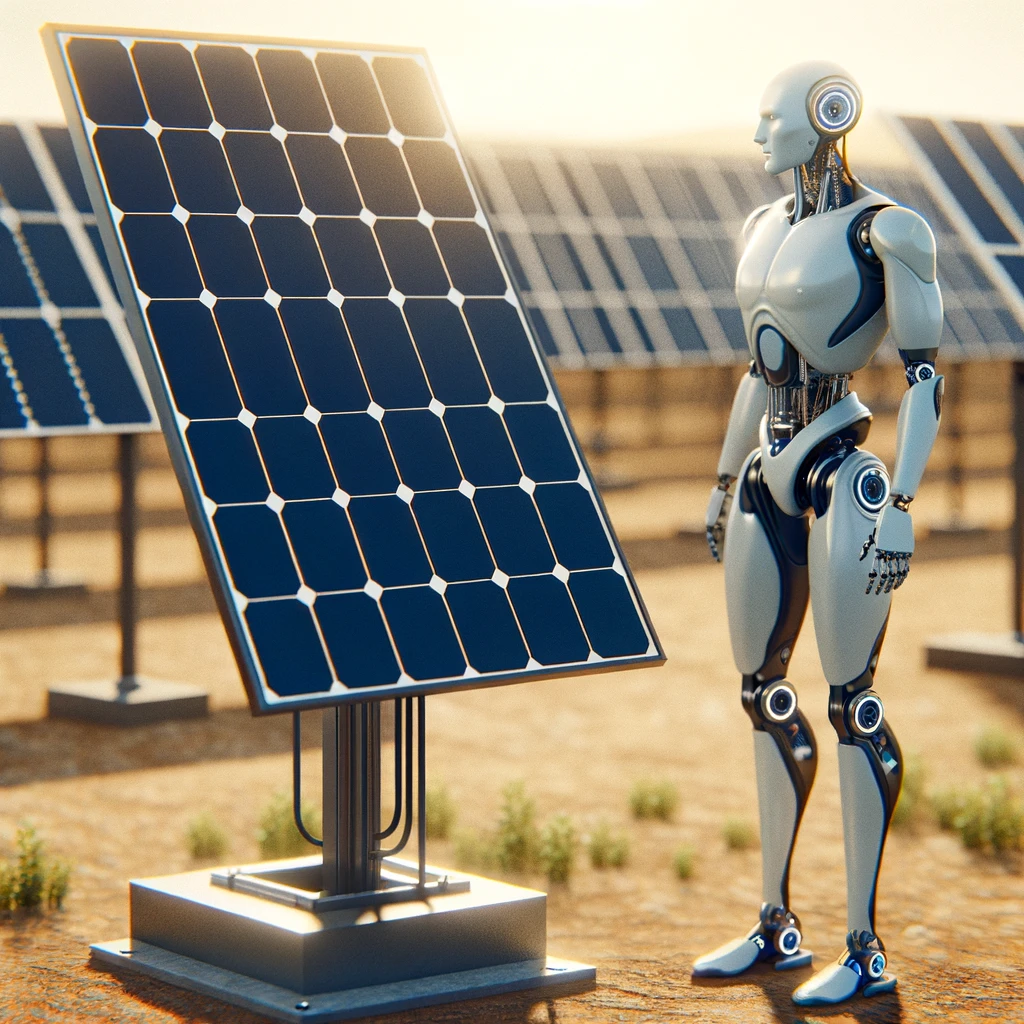In today’s rapidly advancing technological age, two fields that have shown significant promise for addressing global challenges are artificial intelligence (AI) and renewable energy, especially solar energy. At the intersection of these fields lies an innovative and burgeoning area of research and development: the use of AI to enhance solar energy production and utilization.
Artificial intelligence, in essence, refers to machines’ ability to mimic human intelligence, including capabilities like learning, reasoning, and problem-solving1. Solar energy, on the other hand, is the power sourced from the sun’s rays, which is harnessed through photovoltaic cells and transformed into usable electricity.
As the global community grapples with the impending challenges of climate change and energy scarcity, tapping into the sun’s abundant energy has become an imperative.
This fusion of AI and solar energy offers numerous advantages. AI can be utilized to predict optimal locations for solar installations, efficiently manage energy storage and even forecast energy production based on weather patterns.
Moreover, with the help of machine learning, a subset of AI, solar power systems can improve their efficiency over time by learning from previous performance data.
In the subsequent sections, we’ll delve deeper into how artificial intelligence augments solar energy capabilities, transforming it into an even more potent solution for our world’s energy needs.
Predictive Analysis for Optimal Solar Panel Placement
The geographic location of solar panels plays a crucial role in determining the efficiency of energy conversion. Artificial intelligence (AI), with its predictive analytics capabilities, has transformed the way we approach this challenge. Using vast datasets comprising meteorological and geographical factors, AI can pinpoint optimal locations for solar installations1.
For instance, certain regions might receive ample sunlight throughout the year but might be prone to dust accumulation or seasonal changes affecting solar capture efficiency. AI algorithms sift through these myriad factors, providing insights that weren’t feasible a decade ago.
This precise location targeting ensures that the solar panels are positioned to harness the maximum energy, optimizing investments and increasing the yield of solar farms.
Machine Learning for Enhanced Solar Efficiency
Solar panels, like any other equipment, exhibit performance changes over time. Traditionally, engineers and scientists would rely on historical data and manual observations to understand and rectify performance inefficiencies. Enter machine learning, a subset of AI, which has revolutionized this process.
Machine learning algorithms study past performance data, learning from patterns, and predicting potential downtrends in efficiency2. By recognizing these patterns early, necessary adjustments can be made, either in the form of maintenance or calibration.
This proactive approach ensures that solar panels consistently operate at peak efficiency, maximizing energy output.
AI-Driven Energy Storage and Management
One of the primary challenges in solar energy is the inconsistency of energy production. The sun isn’t always shining, and energy demand fluctuates. Addressing this issue is AI, optimizing the storage and release of harnessed solar energy3.
Modern energy storage systems, powered by AI algorithms, can make on-the-spot decisions regarding the distribution or retention of energy. By analyzing current demand, storage capacity, and anticipated sunlight conditions, AI ensures that energy is neither wasted nor falls short.
This dynamic approach ensures a consistent and reliable energy supply, bridging the gaps between production and demand.
Accurate Forecasting of Energy Production
The marriage of meteorological forecasting with AI has given rise to accurate predictions of solar energy production. The efficiency of integrating solar energy into the main grid hinges on knowing when and how much energy will be produced4.
With AI’s predictive capabilities, we can now forecast energy outputs considering imminent weather conditions. This predictive edge ensures smoother grid management, timely energy distribution, and minimizing wastage. It also assists utility providers in planning and making informed decisions about energy distribution.
Harness Your Home’s Energy Potential with AI-Enhanced Solar Solutions
The remarkable synergies between artificial intelligence (AI) and solar energy have demonstrated transformative potential in the broader energy landscape. But it’s not just large-scale energy providers who stand to benefit. Homeowners too can reap substantial benefits by integrating AI-driven solar solutions into their homes.
Imagine a home where solar panels are optimized for maximum efficiency based on precise placement recommendations made by AI. These AI systems, leveraging machine learning, continually analyze energy consumption patterns and adapt in real time, ensuring that every ray of sunlight captured is efficiently converted into power and stored for use.
Further, AI-enhanced storage systems can predict your household’s energy demand, ensuring optimal energy storage and distribution. This not only leads to cost savings but also positions homeowners at the forefront of sustainable living, making a tangible difference in the global shift towards renewable energy5.
Conclusion
So, for homeowners looking to make a smart, future-ready investment, the incorporation of AI in solar installations offers a compelling case. It’s a call to harness the abundant power of the sun more efficiently, made possible by the precision and adaptability of artificial intelligence.
By making this switch, homeowners won’t just be investing in an energy solution; they’ll be investing in a sustainable, tech-driven future, contributing to a greener planet and reaping the rewards of reduced energy bills.
References:
- Sharma, N., & Sharma, P. (2017). Predictive modeling for site selection in solar installations. Journal of Solar Energy Engineering, 139(4).
- Liang, J., & Zhong, P. (2018). Enhancing solar panel efficiency using machine learning algorithms. Renewable Energy, 120, 418-426.
- Anderson, K., & Peters, A. (2019). AI in energy storage and grid management. Energy Storage Journal, 21(1), 55-60.
- Fernandez, C., & Moreno, R. (2020). Solar energy forecasting with artificial intelligence. Journal of Sustainable Energy, 22(2), 95-103.

Leave a Reply